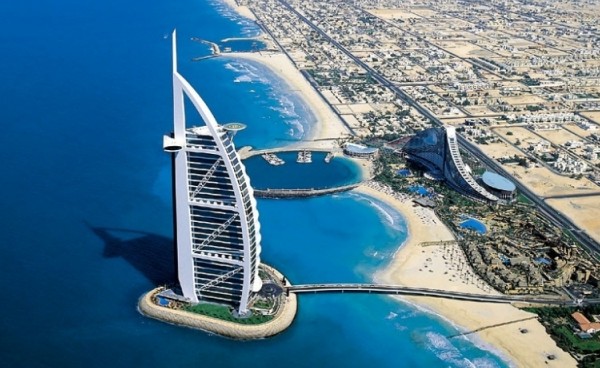Time to Visit the Middle East!
Visitor numbers to Dubai increased by 9.3% in 2012, with the city welcoming more than 10 million visitors over a one year period for the first time in its history.
The results were announced by Dubai’s Department of Tourism and Commerce Marketing (DTCM).
Increases in key indicators including hotel guest numbers, nights, average length of stay and hotel revenues, demonstrate Dubai’s strengthening position as one of the world’s most popular destinations.
H.E. Helal Almarri, Director General of DTCM, said: “For the first time in our city’s history we have crossed the ten million threshold in visitor numbers. This continual year-on-year growth is due to a number of factors including the coordinated city-wide destination management strategy; our world-class infrastructure; our location at the crossroads of East and West; and our unrelenting efforts to enhance our already diverse and compelling tourism offer.”
Key indicators of Dubai’s success in attracting visitors in 2012 include:
CONTINUES BELOW
• Hotel Guests numbering 9.96 million – up 9.5% compared with 9.1 million in 2011
• Guest Nights increasing by 14%, numbering 37,445,453 in 2012, compared to 32,848,190 in 2011
• Hotel Revenues increasing by 17.9% at Dhs18.82bn.
The status of Dubai as a location of choice for hotel operators is demonstrated by an influx of new hotel openings during 2012, with the number of hotel establishments increasing from 575 to 599.
Openings in 2012 included five-star properties such as Jumeirah Creekside, Fairmont The Palm and the JW Marriott Marquis, and a range of new Hotel Apartments with rooms in the latter category increasing by 10% to more than 23,000. However the additional supply has not had an adverse effect on room rates.
Combined with the sharp increase in hotel revenues and a growth in the Average Length of Stay, this is likely to see more hotel operators choose to build in Dubai and a number of new properties are slated to open during 2013 including Sofitel Dubai The Palm Resort & Spa and The Oberoi Dubai on Sheikh Zayed Road.
On the figures, H.E. Helal Almarri commented: “The growth across each indicator is a welcome confirmation of Dubai’s ever-increasing appeal and a testament to the aggressive marketing and promotional agenda of DTCM in positioning Dubai as the major tourist hub of the region and a global destination of choice. The increasing average length of stay and the rising number of hotel apartments is evidence of a growing trend in people and families visiting Dubai for longer periods – historically the city was seen by some markets as a stopover destination but in recent years it has become the destination.”
Arab markets continue to provide a significant percentage of Dubai’s overall visitor numbers and 2012 saw 30% more visitors from Saudi Arabia, which is the city’s number one source market. Europe contributes over a quarter of the city’s hotel guests and the past year saw a substantial 54% rise in the number of Russians coming to Dubai. A significant increase in Chinese visitors coming to the city has also been seen, with a 28% rise in the period demonstrating the appeal that the city has to the burgeoning middle class of China. The Chinese market will continue to be a key focus of Dubai’s marketing efforts as the city looks to capitalise on the circa Dhs202bn that Chinese travellers spend per year worldwide.
H.E. Helal Almarri continued: “The growth in visitors is partly linked to the increasing cross-border trade and investment ties that the city is making with growing economies such as China. As these links continue to develop, visitors from these nations will continue to rise.
“It’s encouraging to see that visitor numbers from all of the markets in which DTCM has a representative office continue to swell, demonstrating the role that our overseas offices play in helping to drive growth in both intra-regional traffic and in arrivals from other key source markets such as India, the UK, the US, Russia, Germany and China.”












